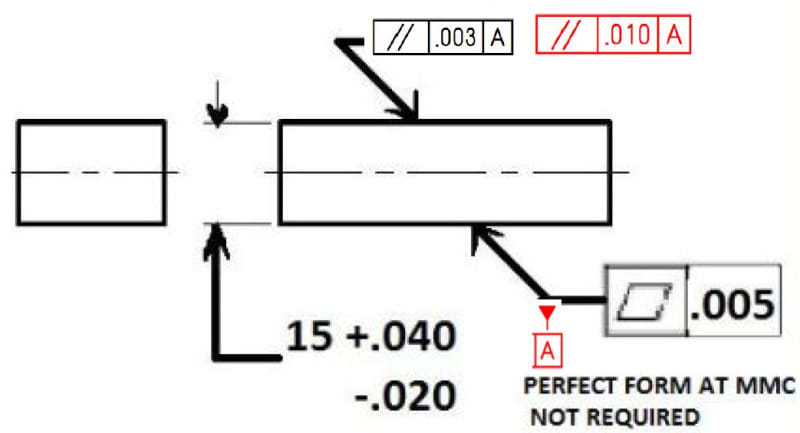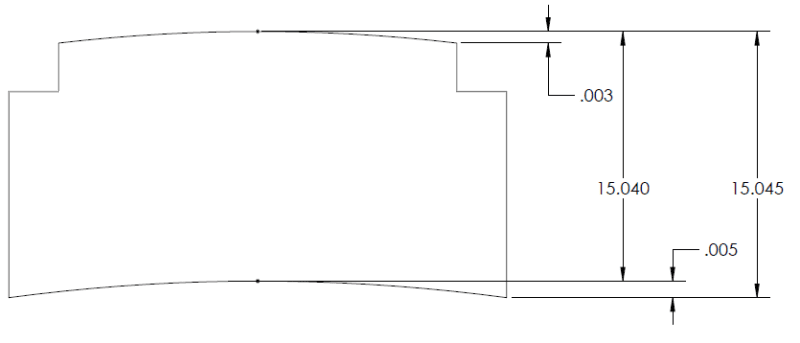pylfrm,
Thats an interesting point - the faces on either side could also be tapered significantly either by design or if there is no (or extremely loose) orientation/size control on them. The step you show would of course have to be included in the design (though I doubt the impact on function would be acceptable in most cases) - the solution otherwise would be to have equal form control tolerances on the datum feature and controlled surface opposite to it in order to be able to use the full tolerance. This is obviously not an ideal situation for most cases for the reasons mentioned in above posts, and additionally if the datum feature were convex (ie: it rocks) and the opposite side used up the entire tolerance zone there could possibly be only a single orientation under which the part would pass inspection. This would likely not coincide with the "single solution" orientation mandated by the 2018 standard on a real part.
The irony of the exercise is that even if both surfaces were given the same amount of tolerance, most shops (or at least most competent shops) would likely produce the datum feature to a sufficiently higher level of accuracy to prevent such issues.


